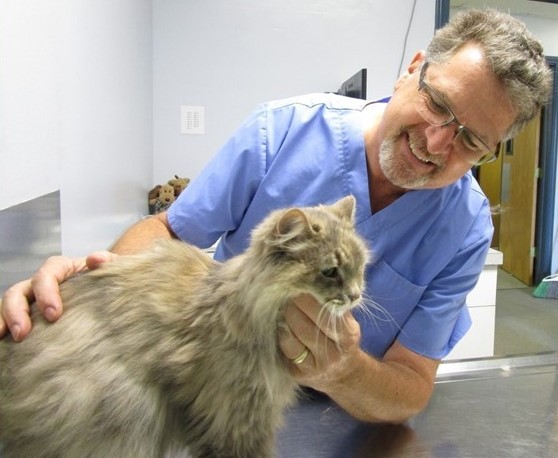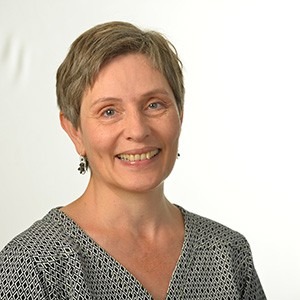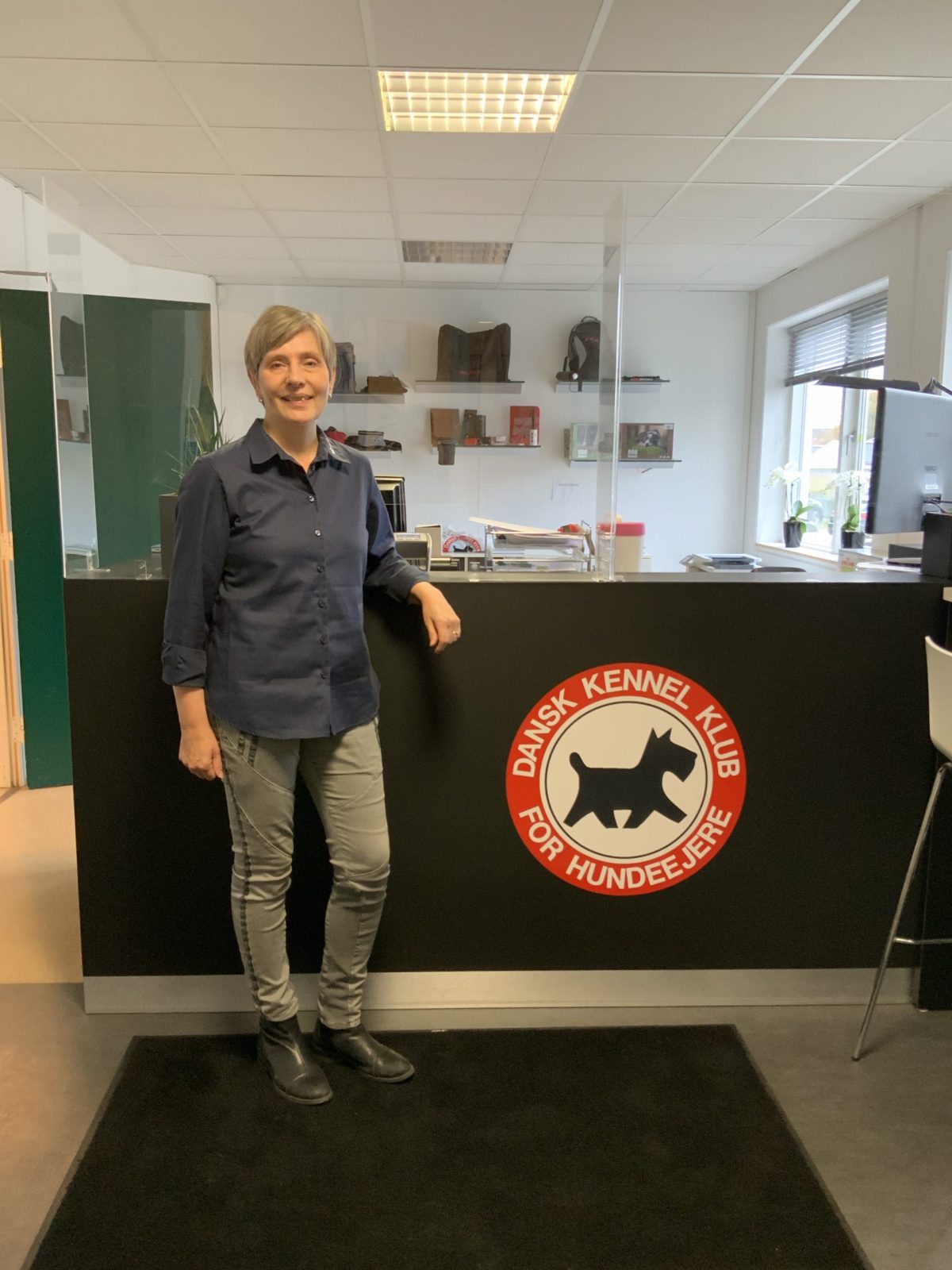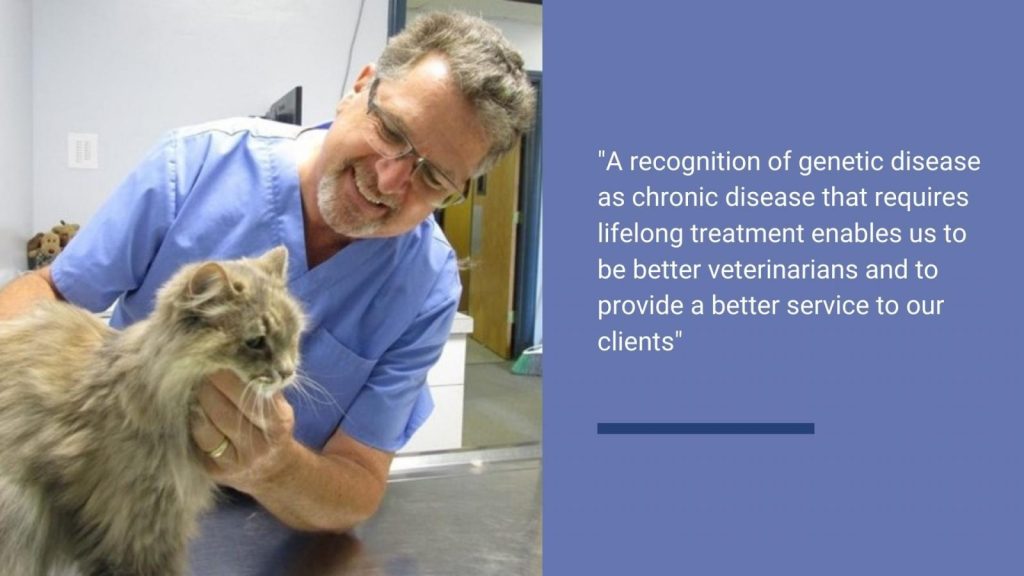A team of experts from around the world!
Dr Jerold (Jerry) Bell chairs the HDC. Jerry is an internationally known clinical genetics consultant and lecturer and owner of Freshwater Veterinary Hospital in Connecticut, USA. Dr Bell is also Adjunct Professor at the Cummings School of Veterinary Medicine at Tufts University and a member of the Board of Directors of the OFA, and the AKC Canine Health & Welfare Advisory Panel.
He says:
[blockquote author=”” link=”” target=”_blank”]
“We see genetic disease every day in our practice, both in mixed-breed and purebred dogs and cats. A recognition of genetic disease as chronic disease that requires lifelong treatment enables us to be better veterinarians and to provide a better service to our clients. In dogs, allergic skin disease is the most common hereditary disorder. In cats, it is inflammatory bladder disease and feline urological syndrome.”[/blockquote]

Dr Jerold Bell
He adds: “Genetic testing has gone direct-to-consumer so veterinarians must understand the types of genetic tests available, as well as how to use and interpret them properly. Resources such as the articles by Dr Oberbauer and Dr Lyons highlighted in this Bulletin, as well as information from the WSAVA/PennGen Dog & Cat Genetic Testing Laboratory Database, and IPFD’s Harmonization of Genetic Testing for Dogs database and Breed Relevancy Ratings, enable us to utilize better diagnostics for our patients and provide valuable service to our clients.
“Through breed and body-type appropriate pre-breeding genetic screening recommendations to clients looking to breed their cats and dogs, we can reduce the incidence of hereditary disease in their offspring. Breeding practices of dogs and cats in different parts of the world differ, but if we can change the paradigm to health-conscious breeding we will have genetically healthier patients.”

Dr Helle Friis Proschowsky
Introducing a HDC Committee Member
Could you summarize your career?
I finished my veterinary education in 1993 and worked for some years in clinical practice and in virus research and diagnostics. I moved to the Danish Kennel Club, when it established its position as veterinary consultant for breeders. I had grown up with dog breeding, my parents bred English Springer Spaniels and the idea of working in this area professionally was very interesting.
horizontal
I quickly found out that I needed a deeper understanding of genetics and was fortunate to be able to do my PhD, while continuing to work at the Danish Kennel Club. I defended my PhD thesis with the title ‘Genetic end Epidemiological studies of Danish Dog populations’ in 2003 and was, until 2010, Associate Professor at Copenhagen University, Department of Animal Genetics.
Since 2010, I have worked at the Danish Kennel Club in breeder education and am also involved with all sorts of genetic counselling of breeders and breed clubs. I still have a close connection to the academic world in relation to supervising veterinary student projects etc.
What does your ‘day job’ involve?
My daily routine is variable but my activities relate to communication, education and counselling. I write articles about canine health for the monthly Danish Kennel Club magazine and teach genetics at our courses for breeders. I am also responsible for liaising with the Danish authorities in terms of legislation about dogs. In Denmark, so-called ‘professional’ breeders must fulfill a number of requirements, including attending courses run by the Danish Kennel Club. A breeder is classified as ‘professional’ if they breed three or more litters per year.
What do you most enjoy about your work?
I enjoy working at the intersection of science and practical breeding. One of my missions is to ‘translate’ results from relevant research articles for breeders and, in this way, help them to learn. As an example, I wrote a review article about disc calcification and herniation in Chondrodystrophic breeds for the Danish Kennel Club magazine last year. Denmark has been at forefront of this issue, running a screening program for Dachshunds based on X-rays of the spine and monitoring the number of intervertebral calcifications. More countries have now adopted the program as a result of the article and, in order to inform breeders about the science behind it more widely, the article has been translated to Norwegian, Swedish, Finnish, English, German and Italian.

Dr Helle Friis Proschowsky
Why did you want to join the Hereditary Disease Committee?
As a member of the HDC, I hope to contribute to increasing overall knowledge of hereditary diseases and to make genetic counselling a natural part of veterinary work. I was head of the Veterinary Study Board during my time at the University and I know that the veterinary curriculum is full to bursting. Genetics is generally taught in the first years and general practitioners may not always feel competent to perform genetic counselling. In addition, the field of genetics is developing rapidly with new molecular techniques and DNA tests coming up.
Why do you think its work is so important?
Most small animal veterinarians are focused on the individual dog or cat in front of them. This is only natural but, when it comes to hereditary diseases, this approach is not enough. An animal suffering from a hereditary disease has parents, siblings and, potentially, offspring, and the breeders/owners of these family members should be informed and maybe involved in the diagnostic process. Each individual animal is also part of a population – a breed – and aspects such as the general health of the breed, hereditary diseases, the numerical size of the population etc. must be taken into consideration. This work is very important in order to secure the long-term health of our dog and cat breeds.
If you had one message for WSAVA members around the world about hereditary disease, what would it be?
‘It’s all about genetics.’ What I mean is that genetic constitution plays an important role in the general health of many animals and, as veterinarians, we must do our best to counsel our clients about all aspects of breeding. This also includes the production of ‘creative’ combinations of breeds to produce so-called ‘designer breeds.’ To me, it is not ‘harmless’ and ‘fun’ to make new ‘breeds’ by combining existing breeds, with large differences in anatomy, behavioral traits etc. because they were originally bred for different tasks (hunting, herding, companion etc.)
What do you enjoy doing outside work?
I live in a tiny village with my husband and two sons and have a daughter studying in Copenhagen. Right now, I am ‘between dogs’ – which means that my old dog died and I have not yet decided when to get a new one. Without a dog, taking a walk is less ‘necessary’, but I enjoy being out in the natural world and still try to get out for daily walks. Music is also a great interest. I sing in two different choirs and play cello and guitar in a folk band.
Tell us something about you that may surprise us!
My interest in animal goes back to my childhood when I dreamed of becoming a taxidermist. I would pick up dead animals and – to my mother’s occasional dismay – store them in our freezer for later experiments. Moles were one of my favorite animals because I didn’t have to bother about glass eyes or complicated internal wire structures to ensure a natural posture. I spent many days in the National Zoological Museum in Copenhagen and still enjoy going there.
The other members of the HDC are
Dr Åke Hedhammar
Dr Susan Little
Dr Leslie Lyons
Dr Cathryn Mellersh
Dr Monique Megens
Dr Claire Wade

